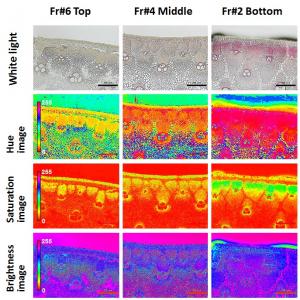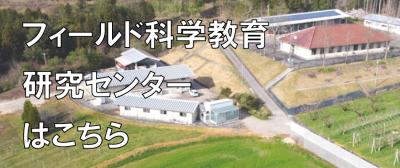本文
【地域資源開発学科】HSQC-NMR解析でタケ の化学特性を解明
印刷用ページを表示する
2020年9月4日更新
【地域資源開発学科】荻田教授の研究が学術論文として採択されました
本研究は,Journal of Agricultural and Food Chemistry誌に掲載されます。
Characterization of Immature Bamboo (Phyllostachys nigra) Component Changes with Its Growth via Heteronuclear Single-Quantum Coh
Chen QU, Shinjiro Ogita, Takao Kishimoto
A 6.2-m-high immature bamboo (Phyllostachys nigra) was divided into seven fractions. The bamboo cell walls and lignin samples from young to old were characterized by 1H-13C correlation heteronuclear single-quantum coherence (HSQC) nuclear magnetic resonance (NMR) spectroscopy both qualitatively and semi-quantitatively. Mature bamboo and bamboo shoot samples were used as comparison references. HSQC-NMR analysis proved that cellulose and arabinoxylan have already deposited in bamboo shoot, and cellulose amount increased during the growth. Lignin sidechain linkage formation started from β-ether (β-O-4), then phenylcoumaran (β-5), and finally resinol (β-β). Ferulic acid and p-coumaric acid (pCA) were formed at the earlier stages in the immature bamboo, and the pCA amount decreased throughout the lignification process. We propose that bamboo lignification process is distinct from both woody and other herbaceous plants, where syringyl units deposited at the early stage and polymerized with the β-O-4 linkage. Then, guaiacyl units formed gradually, and finally, p-hydroxyphenyl units formed.
今回HSQC-NMRの手法を用いてタケ材の細胞壁形成およびリグニン沈着の新たな知見を得ました。タケはその成長過程において急速に伸長して成熟化に至ることから、今回の知見はタケの成長特性の理解に非常に役立つと考えています。また、タケは未利用木質資源として有用であり、竹材の化学特性を知ることで 新たな利活用にもつながるかもしれません。本研究は、富山県立大学工学部生物工学科生物有機化学講座(岸本准教授)との共同研究成果です。

 大学概要
大学概要
 学部・大学院・専攻科
学部・大学院・専攻科
 学生生活・就職支援
学生生活・就職支援
 研究・地域連携・国際交流
研究・地域連携・国際交流
 入試情報
入試情報






